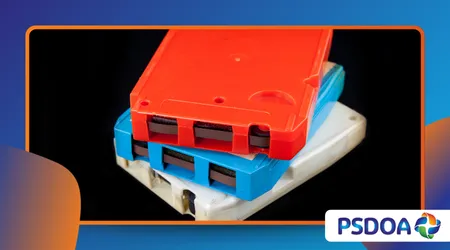The 8-Track Tape: Why It Rose Fast and Fell Faster

In the history of audio technology, few formats burned so brightly and disappeared so completely as The 8-Track Tape.
Anúncios
It was the quintessential technology of the 1970s American car culture, offering portability that vinyl couldn’t match. Yet, within a decade, its clunky design and inherent limitations sent it to the technological graveyard.
Understanding the 8-Track’s dramatic rise and swift demise is a lesson in market innovation and technological disruption. It perfectly illustrates how an initial market advantage can be quickly neutralized by superior, more user-friendly design.
This exploration delves into the unique engineering that made the format possible and the critical flaws that sealed its fate.
We analyze the market conditions specifically, the symbiotic relationship with the automotive industry that propelled The 8-Track Tape to brief stardom. We’ll find out why a format that promised convenience delivered frustrating operational issues instead.
Anúncios
The Birth of Portability: Engineering the Advantage
The 8-Track, officially the Stereo 8, wasn’t an entirely new invention but a commercial refinement of earlier audio cartridge designs.
Its primary purpose was to bring high-fidelity music out of the living room and into the mobile American lifestyle.
The Cartridge Innovation
Unlike the earlier 4-track or the later Compact Cassette, The 8-Track Tape used an endless loop of magnetic tape. This design meant the tape never needed to be manually rewound, offering continuous playback. This feature was revolutionary for car drivers who couldn’t safely fumble with reels of tape or flip vinyl records.
The tape itself held eight tracks, arranged into four stereo programs. This allowed longer albums to be presented continuously without interruption. This convenience factor was the single greatest driver of its initial market acceptance.
The cartridges were bulky and robust, designed to withstand the heat and vibration of a car dashboard. This durability was a key selling point over the delicate nature of vinyl records in a mobile setting.
++ How Vacuum Trains Were Almost a Reality in the 1800s
The Automotive Symbiosis
The primary accelerator of the 8-Track’s success was its exclusive alignment with the auto industry. Major American car manufacturers, led by Ford, began offering 8-Track players as a standard or optional feature in new vehicles starting in the mid-1960s.
This partnership created a captive market: if you bought a new car with an 8-Track deck, you bought 8-Track tapes. This massive distribution channel guaranteed the format’s initial dominance over vinyl for in-car entertainment. The 8-Track Tape was sold not just as music, but as an integral part of the driving experience.
This crucial positioning meant that consumers often bought the same album on vinyl for the home and 8-Track for the car. This dual revenue stream made record labels enthusiastic early adopters of the technology.

The Unraveling: Critical Design Flaws and User Frustration
Despite its initial momentum, The 8-Track Tape carried fundamental engineering flaws that severely hampered the user experience. These issues ultimately alienated consumers.
The Infamous “Ker-Chunk” Moment
The endless-loop design required the player to switch between the four stereo programs using a metal foil splice embedded in the tape. When the sensor hit this splice, the player would clunk loudly, abruptly switching to the next program. This was the dreaded “ker-chunk” sound.
Also read: Roman Concrete: How Ancient Builders Created Structures That Lasted Millennia
The Program Interruption Problem
Since the running time of the four programs had to be nearly equal, engineers often had to split songs to make the side breaks fit perfectly.
Imagine listening to the climax of a song only to have it jarringly cut off by the mechanical “ker-chunk” before resuming a few moments later. This was a common, infuriating feature of The 8-Track Tape.
This design compromise proved aesthetically unacceptable to music lovers accustomed to the seamless experience of vinyl. The required interruption prioritized the mechanical design over the artistic integrity of the album structure.
Read more: Forgotten Monorail Designs That Were Way Ahead of Their Time
Technical Failures and Degradation
The simple, enclosed design led to frequent mechanical failures. The tape within the cartridge was not secured by reels but relied on friction. This design frequently caused the tape to spill out of the cartridge or jam during playback, requiring tedious manual repair.
Additionally, the pressure pad that held the tape against the play head was often made of cheap foam that deteriorated quickly over time.
This resulted in rapid sound quality degradation, muffling the high frequencies and rendering the tape unlistenable. Reliability became a massive user complaint.
The Market Shift: Disruption by Superior Technology
No format exists in a vacuum. The 8-Track Tape was a temporary solution that was swiftly replaced by a format that was superior in every critical metric: the Compact Cassette.
The Quiet Efficiency of the Cassette
The Compact Cassette, which had struggled for years against the 8-Track, finally gained dominance in the late 1970s and early 1980s. Its key advantages directly solved the 8-Track’s major flaws.
Fast-Forward and Rewind Functionality
Unlike the 8-Track’s continuous loop, the cassette allowed for precise fast-forward and rewind, giving the user granular control over the playback. This was a fundamental improvement in user control that consumers immediately appreciated.
Furthermore, the cassette player was significantly smaller, allowing for true portability in devices like the Sony Walkman (introduced in 1979). The 8-Track Tape was primarily a car format, while the cassette offered music everywhere.
The Rise of Personal Portability
The Walkman fundamentally changed how people consumed music, shifting focus from the shared experience of the car/home stereo to personal listening. The 8-Track Tape could not compete with this mobility revolution.
The cassette was also far cheaper to manufacture, allowing record companies to pivot quickly and efficiently. This cost difference, combined with superior features, ensured the 8-Track’s rapid commercial obsolescence. The market had found its superior, mobile format.
Example: In 1975, the RIAA reported that 8-Track tapes accounted for 20% of all recorded music units sold in the US. By 1982, that figure had plummeted to less than 2%, a dramatic decline showing the speed of the shift to cassettes.
Technical Comparison of 8-Track vs. Cassette (c. 1975)
| Feature | 8-Track Tape (Stereo 8) | Compact Cassette (Philips) | Implication for Consumers |
| Tape Mechanism | Endless Loop (One Hub) | Dual Reel (Fixed Length) | Cassette allows Rewind/Fast Forward control. |
| Track Arrangement | 8 Tracks / 4 Stereo Programs | 4 Tracks / 2 Stereo Programs | 8-Track required song splitting; Cassette maintained album continuity. |
| Size/Portability | Bulky, designed for Car Dashboards | Small, pocketable; enabled devices like the Walkman. | Cassette enabled personal, walking listening. |
| Splice Point | Metal Foil (Loud “Ker-Chunk”) | End of Tape (Quiet Flip) | 8-Track caused jarring audio interruptions. |
| Manufacturing Cost | Higher (More Tape, Complex Shell) | Lower (Mass-produced, standardized) | Cassettes allowed for lower retail prices and quicker market flooding. |
The Legacy: A Lesson in Technological Traps
The story of The 8-Track Tape is a classic case study in technological adoption. It shows that initial market success is often fragile if the underlying technology is fundamentally flawed.
The Trap of the Closed System
The 8-Track succeeded because of the closed, high-volume market of the automobile industry. It failed because it was a closed system that could not adapt to changing consumer demands for control and true portability. It was designed for mechanical convenience in a niche, not for general music enjoyment.
Its technical limitations the track splitting, the physical jams, and the audio degradation were inherent to its original continuous-loop design. These design compromises were the seeds of its own destruction.
Analogy: The 8-Track was like the first smartphone with an incredible battery life but no internet connectivity. It solved one major pain point (portability from vinyl) brilliantly but ignored all other emerging user demands.
The Vintage Comeback?
While vinyl has experienced a massive revival, The 8-Track Tape remains largely a niche curiosity. It lacks the superior audio quality of vinyl or the archival convenience of digital formats.
Its revival is largely limited to collectors restoring vintage cars. This confirms that the format’s primary appeal was its novelty and context, not its inherent quality.
The format serves as a perfect historical marker, reminding us that technology must serve the user experience, not the other way around.
Which forgotten format do you think truly deserved a second chance? Share your thoughts on the most frustrating “ker-chunk” moment you remember in the comments!
Frequently Asked Questions (FAQs)
Q: Why was the 8-Track called “8-Track” if it only played stereo music?
A: The 8-Track Tape actually contained eight parallel magnetic tracks. These eight tracks were divided into four separate stereo programs (Program 1: Tracks 1 & 5; Program 2: Tracks 2 & 6, etc.). The player automatically switched between these four programs to achieve the full album length.
Q: Was the sound quality of the 8-Track tape better than the cassette?
A: Generally, no. While the 8-Track tape was physically wider than the cassette tape (0.25 inches vs. 0.15 inches), the faster speed of the cassette player and the inherent design flaws of the 8-Track (such as tape friction and rapid head wear) meant that cassette sound quality, especially with Dolby noise reduction, quickly surpassed The 8-Track Tape in fidelity and consistency.
Q: Did record companies like the 8-Track tape?
A: Initially, yes. Record companies liked the high volume of sales created by the automotive partnership and the fact that consumers often had to buy the same album twice once on vinyl for home and once on The 8-Track Tape for the car. However, they quickly switched allegiance when the cassette became cheaper to produce and its market acceptance exploded.
